Suiseki – The Art of Viewing Stone Appreciation in India
An introduction to viewing stone appreciation in India
By Sudhir Jadhav, Secretary, South Asia Bonsai Federation (SABF); September, 2022
Suiseki, the art of viewing stone appreciation, is an ancient art that originated in China and dates back 2000 years. Small stones with great natural beauty were set on stands to represent the legendary island and mountains associated with Buddhist or Taoist beliefs. In the sixth century A.D., emissaries from the Asian mainland brought several such stones to Japan. The Japanese adapted the art to suit their tastes and popularized this art form across the globe.
The Art of Bonsai was introduced in India in the late 1960s. Suiseki entered the subcontinent at a later date. The art of suiseki probably was introduced as a complementary art form along with bonsai, as the suiseki stones were traditionally displayed along with bonsai in those days. Suiseki has now emerged as an independent art form in India.
Stones play a very important role in Indian culture. Indians worship stone-carved idols of deities at home and in temples. There are beautiful and huge archaeological sites with stone-carved caves and temples. India’s rich geographical mountain ranges, river banks, and sea shores have hidden treasures of viewing stones.
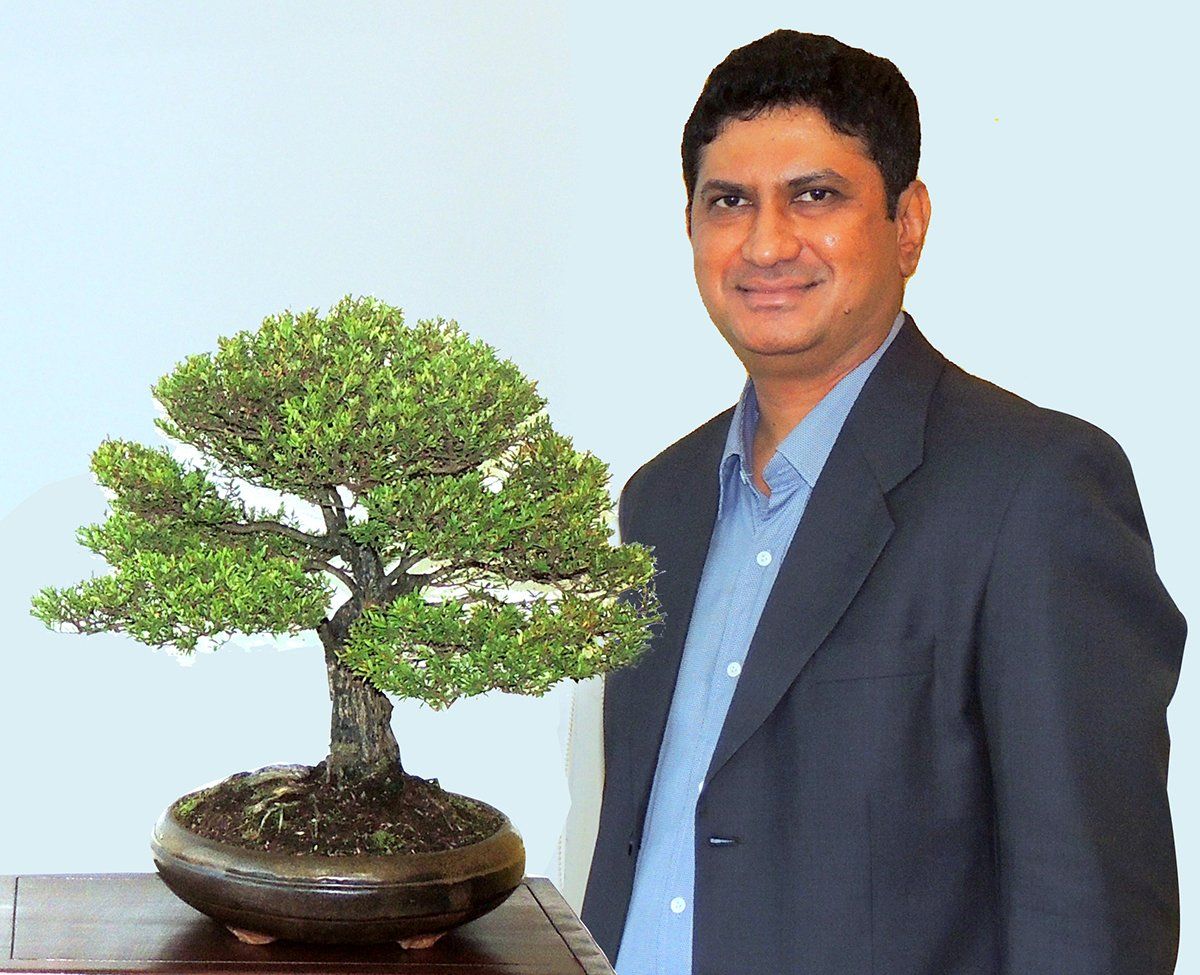
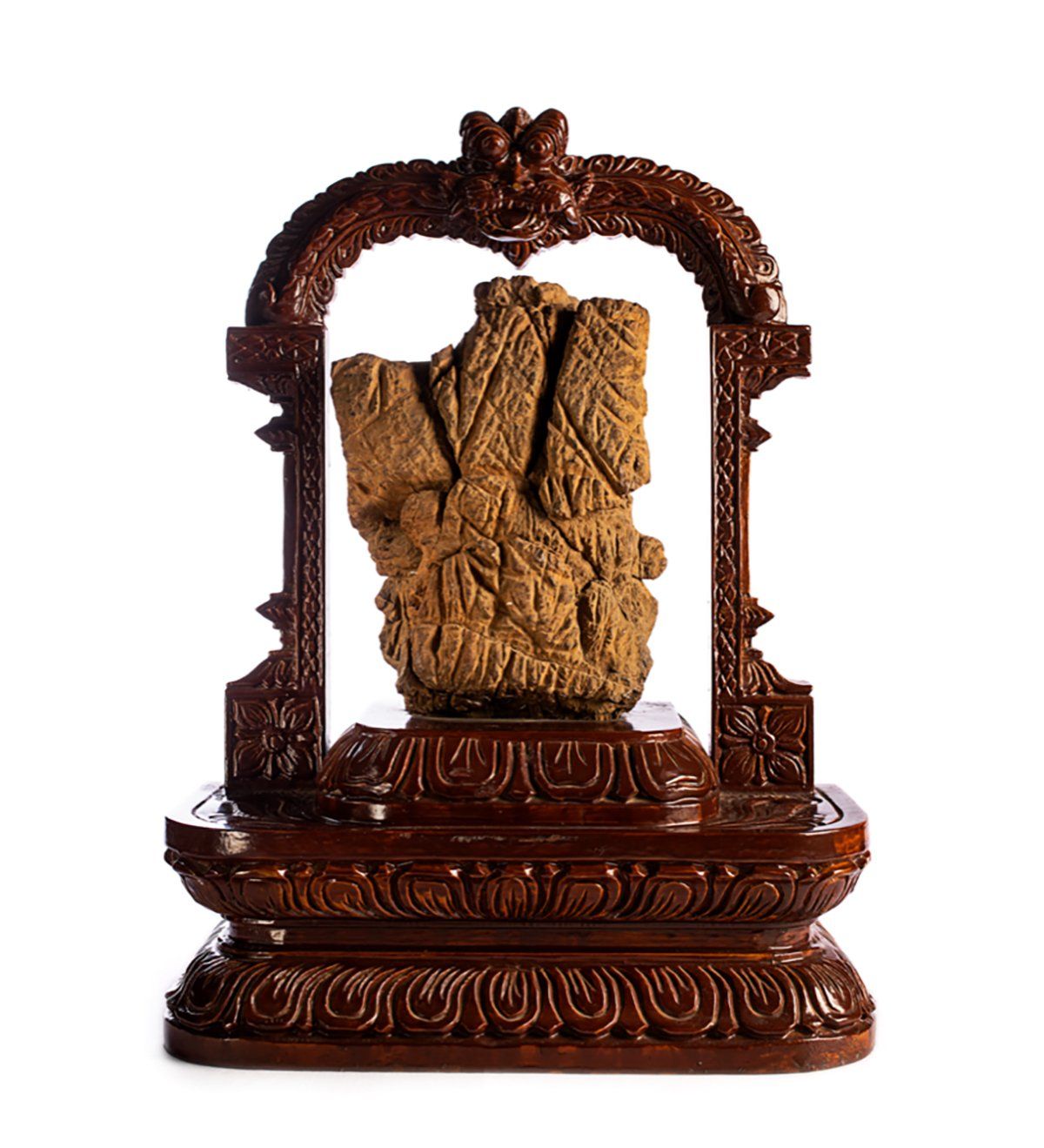
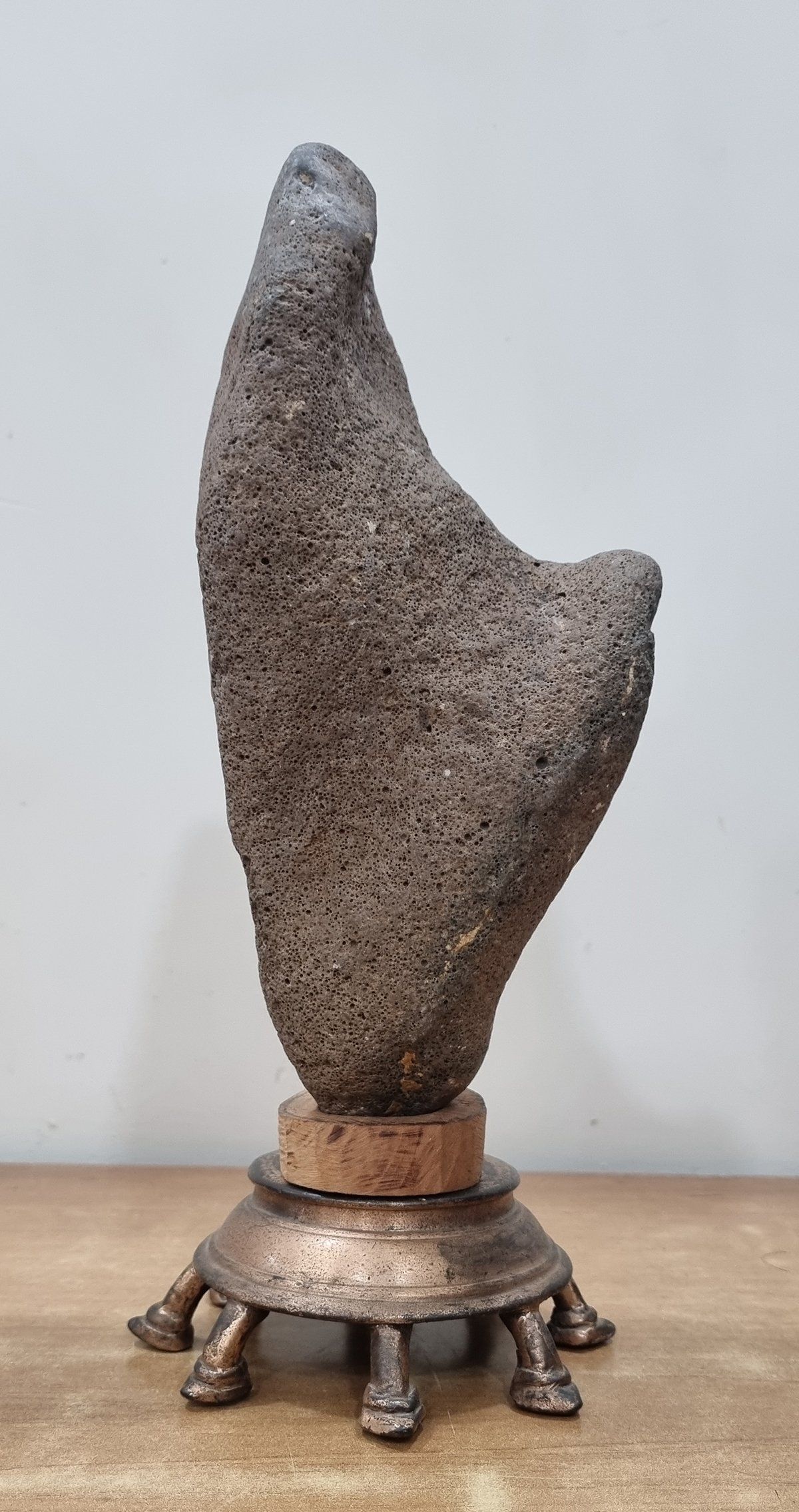

The suiseki journey in the Indian continent is a recent one. In the early 1990s Mr. M. Ponnuswamy, one of the first suiseki artists in India, started collecting stones. He is now considered a pioneer in this art form in India. He traveled extensively to hunt and collect the suiseki stones. In India, he has the largest collection of suiseki stones. In 2014 he also wrote India’s first book on the subject of suiseki named “Suiseki, The Art of Viewing Stone.
Many bonsai artists have started collecting stones from natural sites. Some artists also bought suiseki whenever they traveled for bonsai conventions and exhibitions in other countries like Japan, China, Indonesia, Philippines, Thailand, etc. But these collectors are few in number. Many bonsai artists and office bearers of various bonsai clubs also received suiseki as gifts from foreign bonsai and suiseki artists. This created more curiosity in the minds of bonsai artists. His Holiness Sri Ganapathy Sachchidananda Swamiji of Avadhoota Datta Peetham is a great admirer of suiseki stones and collects stones from India and across the globe.
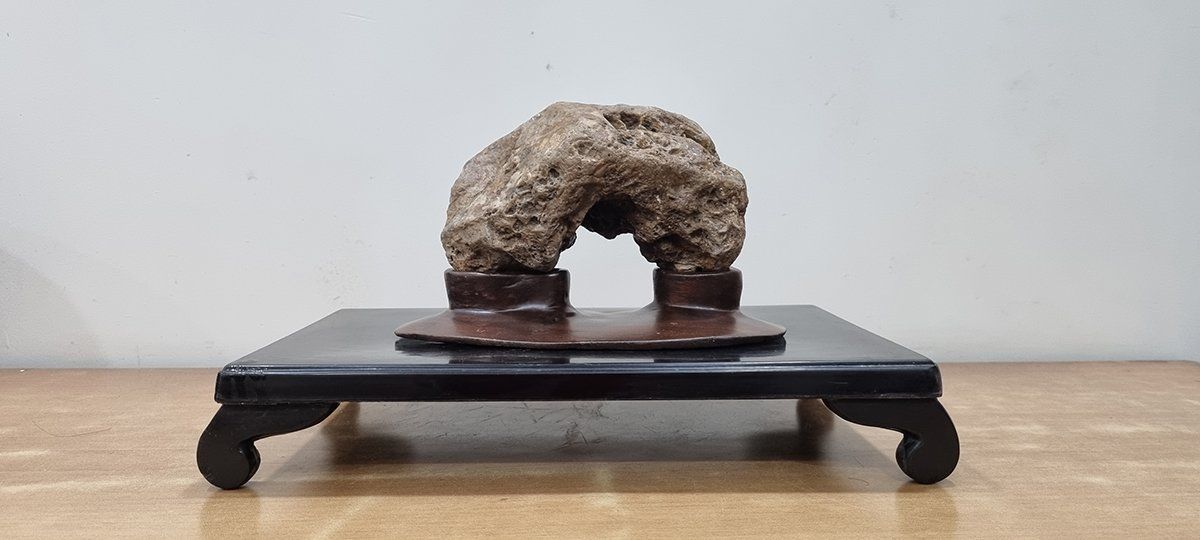
In December 2016, The Avadhoota Dutta Peetham, at Mysuru, India, organized the International Bonsai Convention and Exhibition. The exhibition included a display of Suiseki from different collectors from India. Master Lindsay Bebb was a speaker on the subject of suiseki and conducted a very informative session for the Indian delegates who had gathered in large numbers.
In 2018, The World Bonsai Friendship Federation created its ninth region, South Asia Bonsai Federation (SABF). The birth of this new organization saw a great revolution in the region as the art of suiseki was reintroduced by the President of SABF, Mrs. Sneh Prasar. SABF introduced many events to promote the art of Suiseki in India. Master Lindsay Bebb, Chairman of the World Bonsai Friendship Federation (WBFF), conducted a suiseki session for beginners. Master Anthony Gedang from the Philippines conducted a knowledge sharing session about his journey into the suiseki art form for the Indian and regional viewers. These sessions were instrumental in generating a great level of interest in the artists. Master Budi Sulistyo also conducted sessions on suiseki at the club level. SABF conducted two National Virtual Exhibitions of Bonsai and Suiseki in 2021 and 2022 to popularize suiseki art.
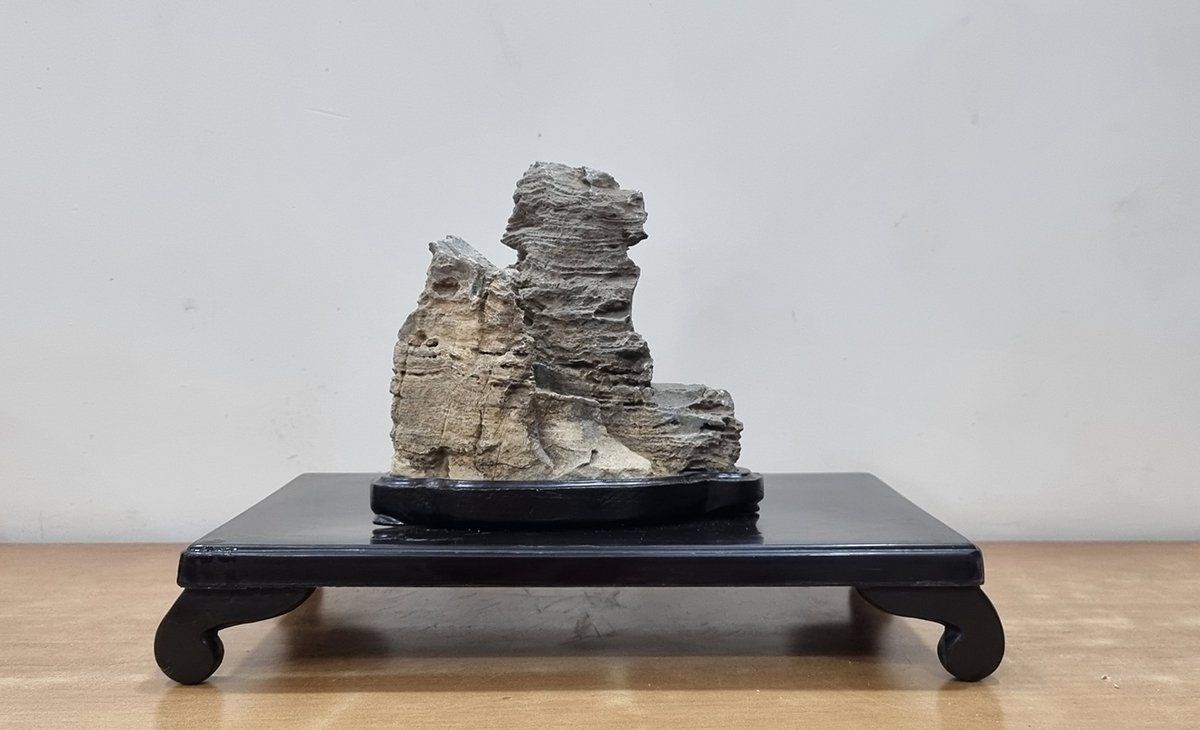
SABF also runs a Suiseki Book Reading Club for its members. These initiatives laid stepping stones to many positive developments for the art of suiseki in India. His Holiness Sri Ganapathy Sachchidananda Swamiji established the World Bonsai Cooperation Center for SABF and WBFF in Mysuru and also India’s first display of Suiseki at The SGS Vishwam Museum. This beautiful Museum displays suiseki stones in different forms and sizes, collected from all over the world by Sri Swamiji.
Master Tom Elias conducted a Suiseki Master Class for the south Asian region and Indian viewers on October 23, 2021. The viewers very much appreciated this.
On June 4 and 5, 2022, Sri Avadhoota Datta Peetham, in collaboration with South Asia Bonsai Federation (SABF), conducted India’s First International Suiseki Convention virtually. Master Tom Elias was the Keynote Speaker. A book depicting stones from the Sri Swamiji’s collection, named “Shilakhand – The Art of Viewing Stone Appreciation,” was also released on this occasion. This event will always be referred to as a significant milestone in the history of Suiseki in India.

This event left a great impression on suiseki in the minds of Indian suiseki artists. The knowledge sharing by Master Tom Elias was tremendous and resulted in a deep level of curiosity in the minds of the admirers of suiseki not only from India but across the globe. India's history, dating back to 3200 BC, has been influenced considerably by the disposition, development, and use of stones. Innumerable temples, forts, and palaces of ancient Indian civilization have been carved out of locally available stones. The Taj Mahal at Agra was constructed from Indian marble. Some rock-cut structures include Khajuraho Temple, Elephant Caves, Lomesh Rishi caves, Ellora caves, and Konark Temple. Besides, all major archeological excavations have revealed exquisitely carved statuettes and carvings in stone. Ancient Buddhist monuments like the Sanchi Stupa of the 3rd century BC have also been carved out of stone.
India has exotic varieties of natural stones such as granite, basalt, marble, slate, sandstone, limestone, jasper, quartzite, laterite, travertine, etc. Apart from these, non-metallic stones like mica, dolomite, gypsum, magnesite, kyanites, etc. are also found. Pertinent suiseki, based on the geographical prevalence, can be hunted.
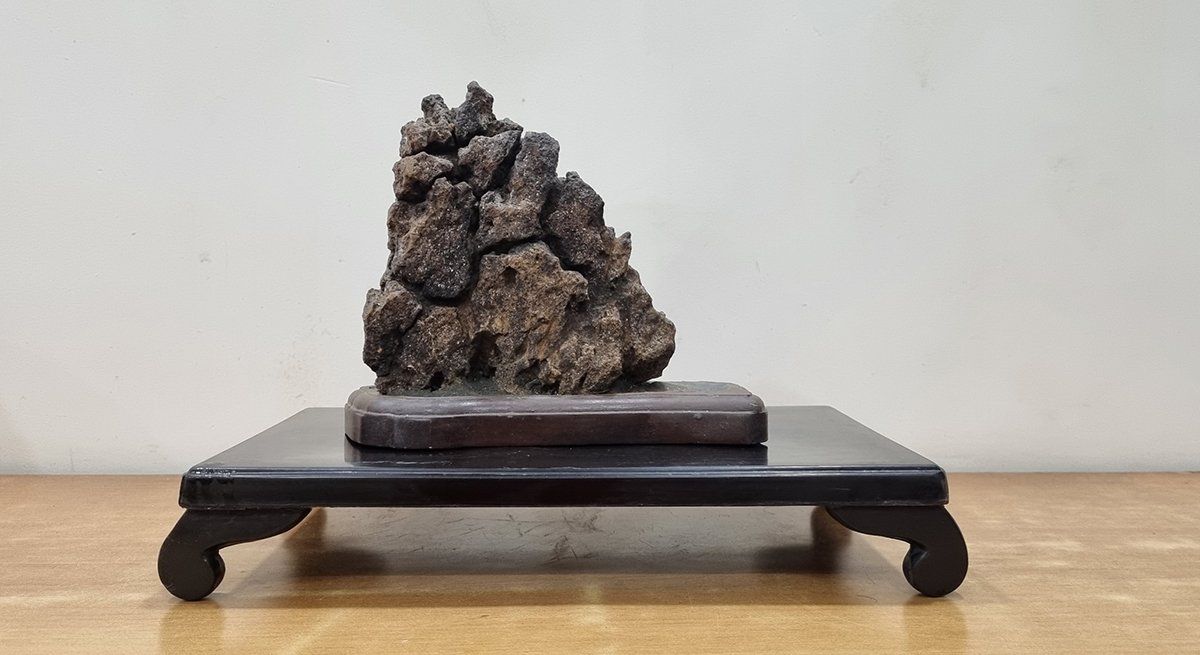
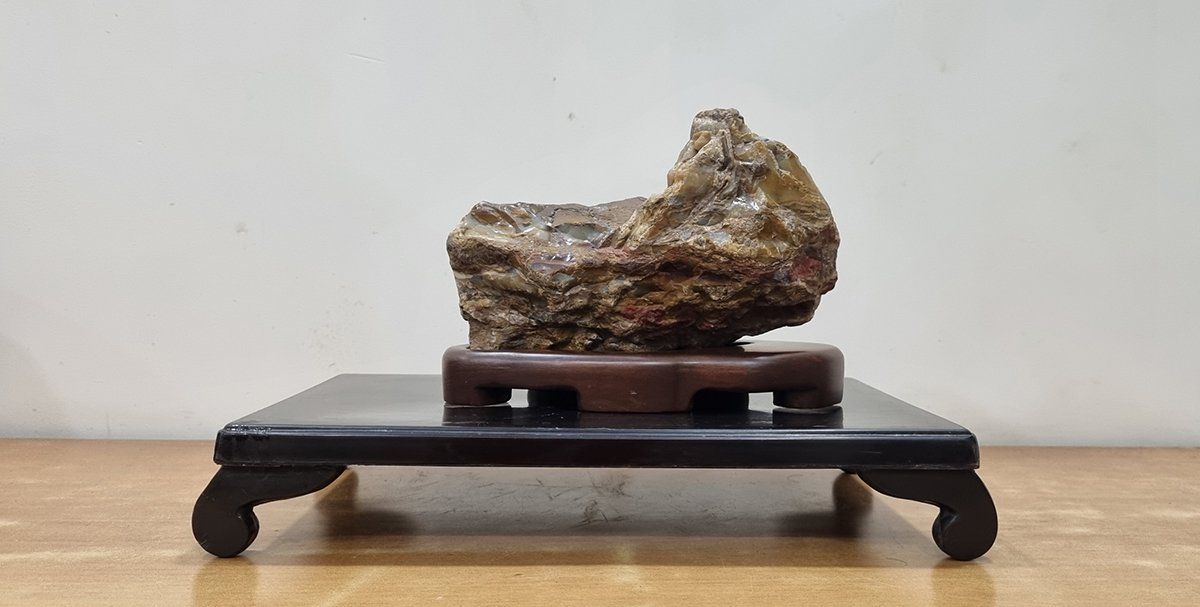
India has its own attachment to stone and natural formations of rock since we tend to associate them with religion. Indians worship Saligrama stones, in which we see Lord Vishnu in an abstract form. We also worship stones having natural figurines of gods. Stones are also laid down at the boundary of a village or small town to mark and define the geographical area. These stones are often worshipped.
A great variety of nature stones, object, and ornate stones could be found in the Indian territories. Nature stones that depict mountain, mountain ranges, valleys, plateaus, pool stones, shelter stones, or waterfalls are some of the very popular forms. Object stones that depict gods or goddesses, human figurines, animals, birds, houses, and many other articles are most admired by collectors.
The Himalayas, Saltoro range in Ladakh, Leh, Garhwal can be great hunting grounds in the northern region. In the central – west to the east region the Girnar range, Aravali range, Malwa, Vindhya, and Satpura range are yet to be explored. With its dense forests, the entire Western Ghat and Nilgiris at the southern Indian region can be an excellent source for Suiseki. Banks of rivers like the Ganges, Yamuna, Godavari, Krishna, Brahmaputra, Narmada, Indus, Tapti, and Kaveri, etc., have great suiseki stones created naturally because of their rapid water flow.
Suiseki as an art form is at an early developmental stage. It is gaining popularity daily as the artists see a huge potential for the art to flourish in India. Many young artists are exploring this art form through lectures, reading, and hunting expeditions in nature.
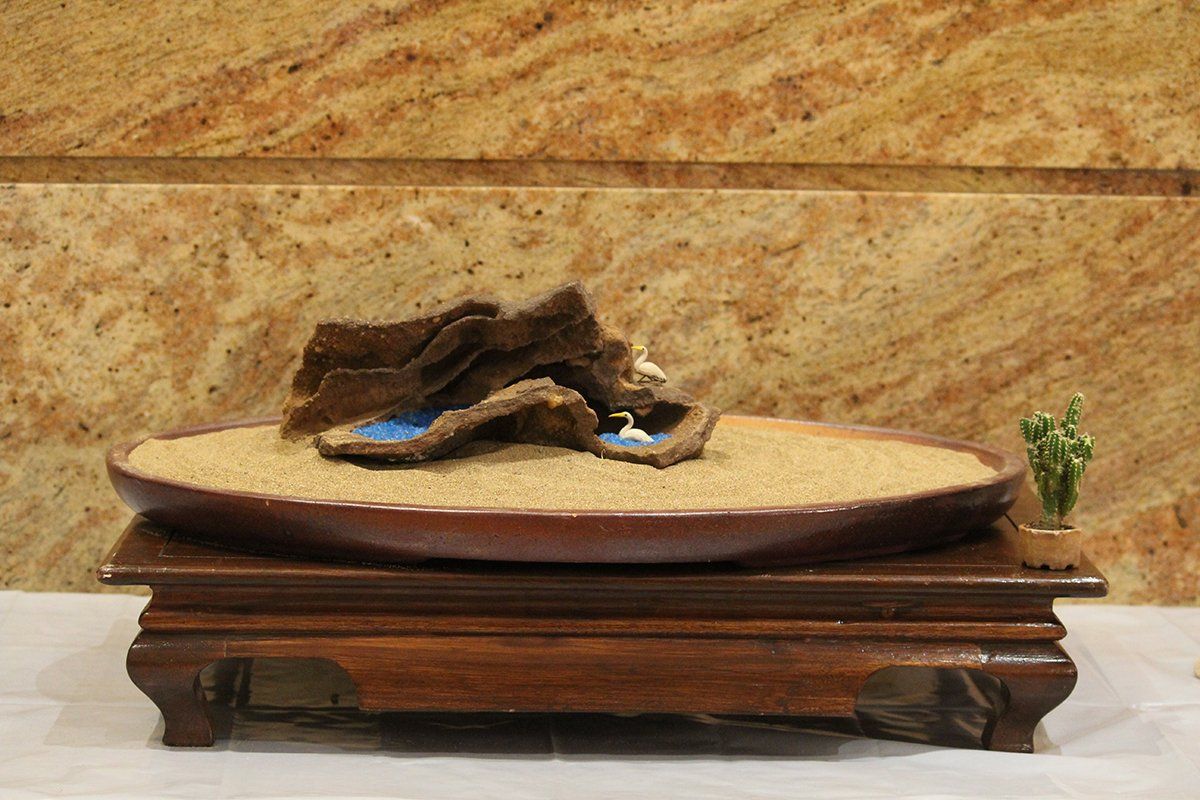
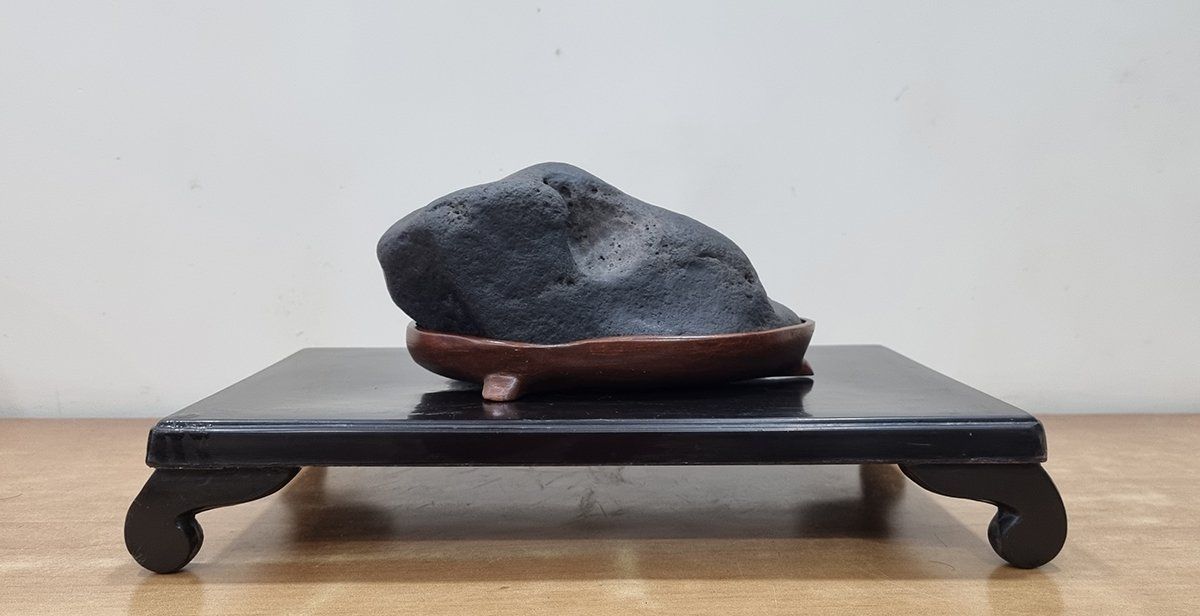
The SABF has planned its next big event, the commencement of a virtual school for suiseki for the artists in the region. This will be perhaps one of the world’s first schools of its kind. The school aims to provide a platform for learning to all suiseki enthusiasts in the country. A stone hunting expedition to Central India is also in the cards. The journey has begun, and it will create an immense impact in the world of suiseki in the next couple of years.

